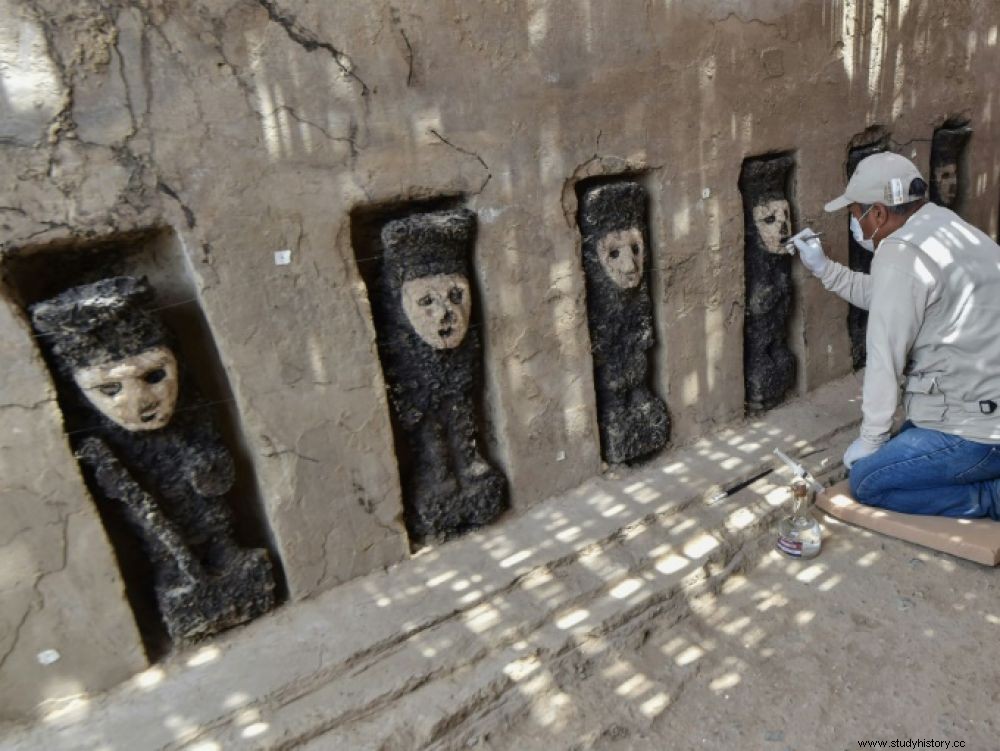These 70 cm high statuettes were placed in the alcoves of one of the fortified palaces of the ancient city of Chan Chan. These would be the oldest sculptures in the region known to date.

An expert works on the excavation of wooden statues discovered at the Chan Chan archaeological site in the Trujillo region of northern Peru on October 20, 2018.
Twenty 800-year-old wooden statues have been discovered in the ancient city of Chan Chan, the largest pre-Columbian site in America, archaeologists and Peruvian Minister of Culture Patricia Balbuena announced on Monday (October 22, 2018). These 70 cm statuettes, all in good condition except one, were unearthed in the ancient capital of the Chimu Empire, located near the modern city of Trujillo, 570 km north of Lima. The sculptures were lined up in niches carved into the wall of a corridor decorated with earthen bas-reliefs, in a building dating back a thousand years.
The corridor where they were spotted was only discovered in June 2018 in the Grand Chimu Palace, one of ten fortified palaces in the city of Chan Chan, visited by thousands of tourists from all over the world every year. "It is an important find because of its age and the quality of the decoration ", welcomed the Minister of Culture, visiting the site. The statues, discovered in September, are black with a beige mask. They "would be the oldest sculptures known to date in Chan Chan ", specified the archaeologist Arturo Paredes, who directs the excavations.

An expert works on the excavation of wooden statues discovered at the archaeological site of Chan Chan, in the region of Trujillo, in northern Peru, on October 20, 2018 (©AFP - CRIS BOURONCLE)
The Chimu Empire reached its peak between 900 and 1450 on the northern coast of Peru. At the time, Chan Chan, which means "resplendent sun", had 30,000 inhabitants. The city then had ten citadels, or fortified palaces, in its center of six square kilometers. In total, the city extended over 20 square kilometers. The city of Chan Chan was listed as a World Heritage Site in 1986 by UNESCO. More than 500 people, including 50 archaeologists, work on the site in various research projects.
